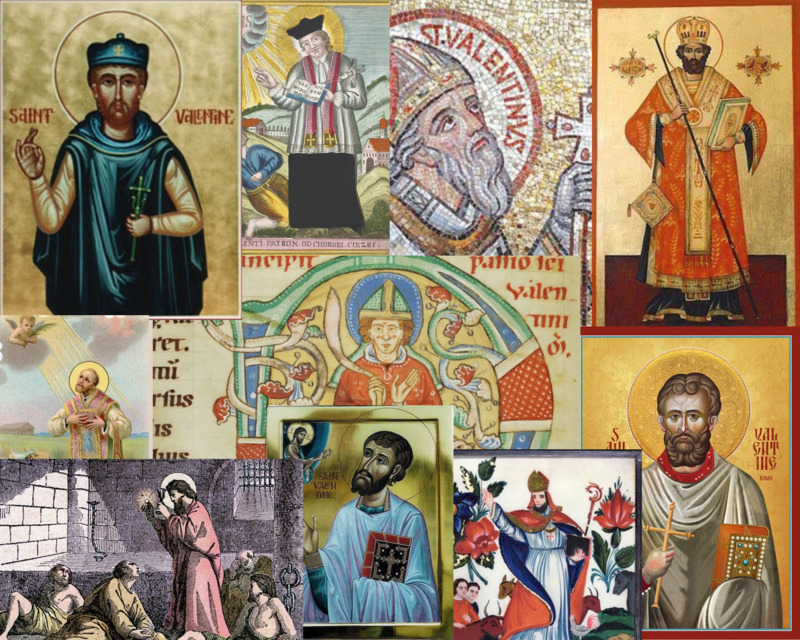St. Valentine's Day
Who was St. Valentine? A more apt question would be, who were the St. Valentines? The name was so popular in the Roman empire that there were over thirty men (and a few women) who were eventually canonized as "St. Valentine." It should be noted that some were only "baptized" a with the name after their unidentifiable martyred remains were found. The details become even murkier when we consider that every surviving "account" of St. Valentine's life was written in the sixth-century or later, at least two-hundred years after his beheading on February 14 under the reign of Emperor Claudius II (between 268 and 270).
Regardless of the identity of the man or men behind the name, a cult formed around "St. Valentine" by the mid-fourth century. After 313, Christianity was officially tolerated in Rome under Emperor Constantine. Pope Julius I oversaw the building of a basilica and the Gate of St. Valentine (now Porta del Popolo) later in the fourth-century. Even after the fall of the Western Roman Empire, the gate remained a popular destination for pilgrims as it was said to hold the saint's body. (Today, multiple churches claim to house the St. Valentine's remains.) The medieval church encouraged the myth of St. Valentine to spread by perpetuating fantastic (and likely a-historic) accounts of his life. A consistent theme in the hagiography was St. Valentine's healing of children with seizures, leading to him being considered the patron saint of epileptics.
According to tradition, Valentine's Day is a Christianized version of Lupercalia, a Roman festival taking place on the fifteenth of February where boys drew the names of girls on billets. This theory has been disputed in academic literature. It is also unclear how St. Valentine became a figure associated with romance and fertility. Unfortunately, whether Valentine's Day evolved from Lupercalia, Anna Perenna (another Roman fertility festival in mid-March), or a was a new holiday all on its own has been lost to centuries of folklore and church-backed propaganda.

